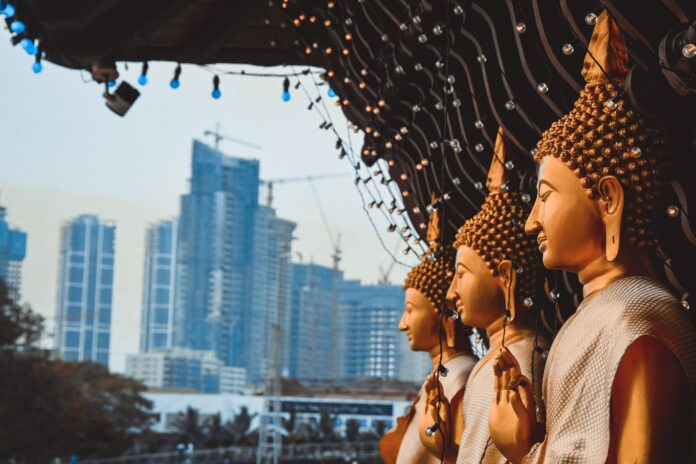Are you planning to visit Colombo, Sri Lanka, and looking for a place to experience the country’s rich culture and religious history? Look no further than Gangaramaya Buddhist Temple, one of the most iconic temples in Sri Lanka. In this article, we will delve deeper into the history, significance, and attractions of the Gangaramaya Temple.
Introduction
Gangaramaya Buddhist Temple is a temple that combines modern architecture with traditional Sri Lankan design elements. The temple is located in Colombo and is one of the most significant Buddhist temples in Sri Lanka. The temple was founded in the late 19th century by Ven. Hikkaduwe Sri Sumangala Nayaka Thera, a prominent Sri Lankan monk who played a vital role in the revival of Buddhism in Sri Lanka.
History
Gangaramaya Temple has a rich history that dates back to the late 1800s. The temple was originally a small hermitage, and it was only later that it was transformed into the grand temple it is today. The temple is home to several significant relics, including a hair relic of the Buddha and an ancient stone Buddha statue.
Significance
Gangaramaya Temple is significant not only for its historical and cultural importance but also for its role as an educational institution. The temple houses a museum, library, and a vocational training center for monks. The temple also hosts several cultural events, including the annual Navam Perahera, which attracts thousands of visitors from all over the world.
Attractions
Gangaramaya Temple is home to several unique attractions that make it a must-visit destination in Colombo. One of the main attractions is the Seema Malaka, a floating temple located on the Beira Lake. The temple is a peaceful oasis in the midst of the bustling city and is the perfect place to relax and meditate.
Another popular attraction is the temple’s museum, which features a replica of the Aukana Buddha statue, along with many other artifacts. Visitors can also admire the temple’s stunning architecture, which seamlessly blends traditional Sri Lankan design elements with modern features.
How To Get There
By Taxi: Taxis are widely available in Colombo and are a convenient way to reach the temple. Simply hail a taxi on the street or use a ride-hailing app to book one. It’s best to negotiate the fare with the driver before getting in.
By Tuk-Tuk: Tuk-tuks are a popular mode of transport in Sri Lanka and are a fun and affordable way to reach the temple. You can find them on the street or ask your hotel to arrange one for you. Be sure to negotiate the fare with the driver before getting in.
By Public Transport: If you’re on a budget, you can take public transport to the temple. Buses and trains are available, but they can be crowded and confusing for first-time visitors. It’s best to ask for directions at your hotel or hostel.
By Foot: If you’re staying in the city center, the temple is within walking distance. Simply follow the directions to Beira Lake and you’ll find the temple nearby.
No matter how you choose to get there, the Gangaramaya Buddhist Temple is a must-visit destination in Colombo Sri Lanka. With its rich cultural heritage and stunning architecture, it’s sure to be a highlight of your trip.
Contact Gangaramaya Temple
Conclusion
In conclusion, Gangaramaya Buddhist Temple is a must-visit destination in Colombo, Sri Lanka. The temple’s rich history, cultural significance, and unique attractions make it a favorite among locals and tourists alike. Whether you are looking to learn more about Sri Lankan culture, explore Buddhist traditions, or simply relax and meditate, Gangaramaya Temple has something for everyone.
FAQ
What is the best time to visit Gangaramaya Temple?
The best time to visit Gangaramaya Temple is during the annual Navam Perahera, which takes place in February. However, the temple is open to visitors year-round.
Is there an entrance fee for the temple?
Yes, there is an entrance fee of 300 Sri Lankan rupees for adults and 200 Sri Lankan rupees for children.
Are there any dress code requirements for visiting the temple?
Yes, visitors are required to dress modestly when visiting the temple. Shorts and sleeveless tops are not allowed, and visitors are encouraged to cover their shoulders and legs.
